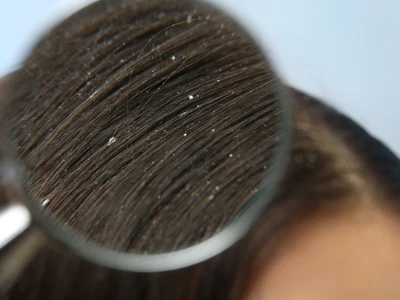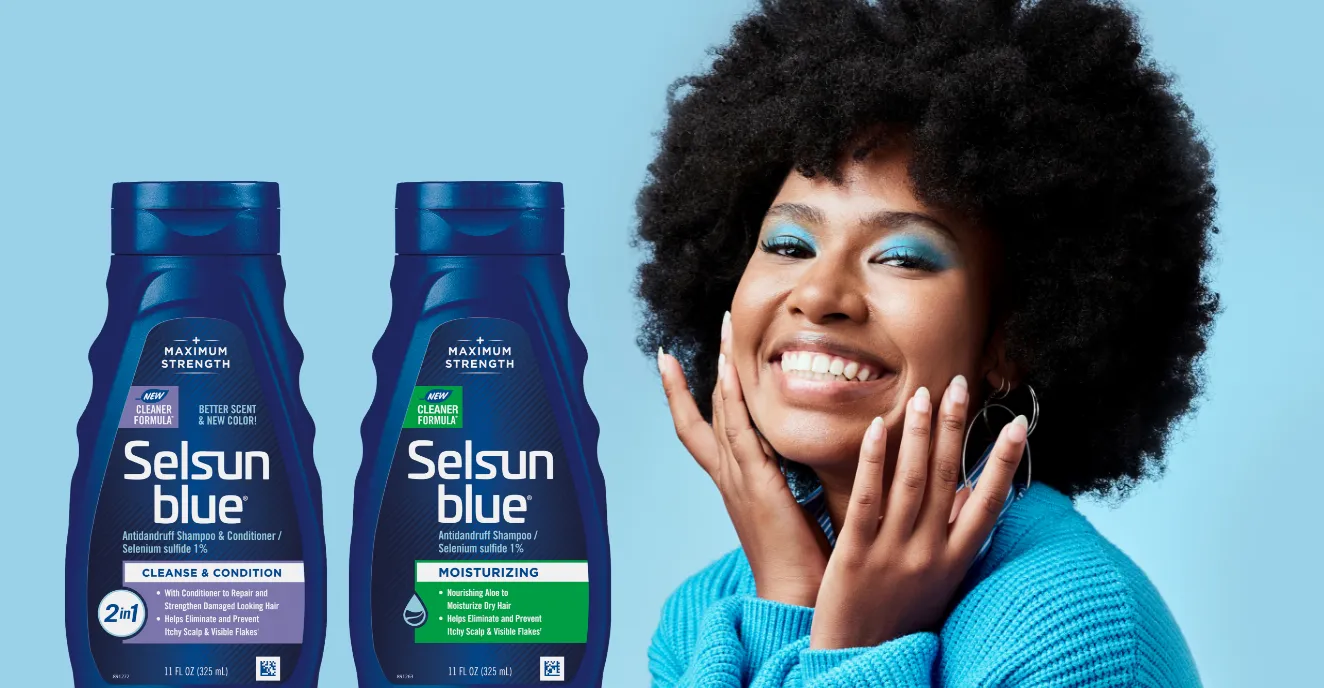Do I have dandruff: Key symptoms & causes
2:40 MINUTE READ TIME

Is it just a patch of dry skin that’s causing irritation on your scalp, or do you have dandruff? What color is dandruff so you can recognize it? Could it be another skin disorder? There are many skin conditions that can affect the scalp, some with overlapping symptoms of dandruff. To make sure you’re addressing the root cause of your discomfort, read on to find out the differences.
Key symptoms of dandruff
Dandruff is a common scalp condition that occurs when skin cells cluster together and create white or yellowish patches, or scales, on the scalp. The scales flake into your hair, or onto your neck, shoulders, or clothes. Dandruff can also appear on your beard or eyebrows.
A small amount of skin flaking is normal, but some people also experience itching, redness, and irritation from dandruff that require relief. Use Selsun blue® antidandruff shampoo to address these symptoms.
What causes dandruff?
Dandruff is caused by seborrheic dermatitis, which can also affect other areas of the body. Doctors attribute seborrheic dermatitis to an overproduction of oil on the skin, or to overgrowth of a naturally occurring fungus that’s found in the skin’s oils, called Malazessia. When seborrheic dermatitis affects your scalp, it’s more commonly known as dandruff.
Fun fact: babies can get dandruff too. When seborrheic dermatitis appears on a baby's scalp, it’s known as cradle cap. Consult with your pediatrician before using any product on your baby's scalp.
Dandruff or dry skin?
People with dry scalp and dandruff share some key symptoms, such as visible flakes and itchy skin, but the two conditions have different causes. If you have a dry scalp, the flakes are produced by dehydrated, dead skin cells. With dandruff, however, the flakes are caused by an overproduction of oil on the scalp that drives skin cell buildup on your skin, and may present with visible scales on the skin.
Other skin conditions that can affect the scalp
There are several other skin disorders that can have overlapping symptoms with dandruff, along with some key differences. Having one of these conditions may increase your chances of having dandruff:
- Psoriasis: Instead of white or yellowish patches on the scalp, patches caused by psoriasis are often silver or powdery in appearance, and can spread to other areas of the body such as elbows and knees, lower back, fingernails and toenails, palms and feet.
- Eczema: In addition to the scalp, often affects the arms, backs of the knees, and cheeks. Unlike dandruff, eczema can cause small bumps that may release fluid when scratched.
- Rosacea: Distinguished by red, flushed skin, usually visible on the face, that often stings or burns.
Diagnosis and treatment
If your symptoms aren’t responding to antidandruff products, or if you suspect you might have another skin issue, see your doctor or dermatologist. They will be able to diagnose your skin condition and determine what specific treatment options would work best for you.
Antidandruff
.webp)







